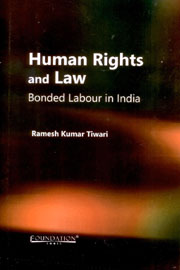Book contents
- Frontmatter
- Contents
- List of Tables
- Foreword
- Preface
- 1 Introduction
- 2 Slavery and Debt Bondage in British India: Policy and Implementation
- 3 Debt Bondage during the Post-Independence Period: Policy Developments
- 4 Problems in the Implementation of Bonded Labour System (Abolition) Act, 1976
- 5 Rehabilitation of Released Bonded Labourers
- 6 Judicial Intervention
- Conclusion
- Appendices
- Glossary
- Biographical Notes
- Bibliographical Essay
- Index
3 - Debt Bondage during the Post-Independence Period: Policy Developments
Published online by Cambridge University Press: 26 October 2011
- Frontmatter
- Contents
- List of Tables
- Foreword
- Preface
- 1 Introduction
- 2 Slavery and Debt Bondage in British India: Policy and Implementation
- 3 Debt Bondage during the Post-Independence Period: Policy Developments
- 4 Problems in the Implementation of Bonded Labour System (Abolition) Act, 1976
- 5 Rehabilitation of Released Bonded Labourers
- 6 Judicial Intervention
- Conclusion
- Appendices
- Glossary
- Biographical Notes
- Bibliographical Essay
- Index
Summary
It is proposed in this chapter to deal with the policy developments in the context of debt bondage. To this end, this chapter provides an overview of the various measures taken since 1947, which culminated in the formulation of the Bonded Labour System (Abolition) Act, 1976. It discusses the policymaking process in general and within the context of the Act, the role of the Union Ministry of Labour, inter-ministerial consultations, consultation with the state governments, discussions in the Parliament, etc.
Initial Efforts
The Provincial Labour Minister's Conference held in November 1947 was of the opinion that forced labour was prevalent in certain states and unless a general enquiry was undertaken, the subject would not be tackled effectively. On 11 August 1948, the Ministry of Labour, Government of India appointed P. S. Dhamne as Officer on Special Duty to study the various legal enactments and to submit a report indicating the extent to which the existing legislation was inadequate and what further legislation was required. The Officer on Special Duty in his study adopted two broad divisions of forced labour. The first category included forced labour authorised by law, while the second category included forced labour under debt bondage. The Report contained proposals for repeal or amendment of the off ending provisions in various enactments allowing exaction of forced labour, in order to bring them in conformity with the International Labour Convention on Forced or Compulsory Labour.
- Type
- Chapter
- Information
- Human Rights and LawBonded Labour in India, pp. 38 - 59Publisher: Foundation BooksPrint publication year: 2011

